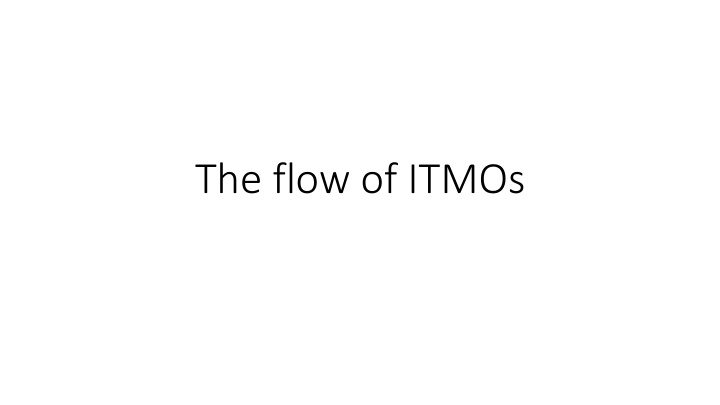



The flow of ITMOs
Preparing for the flow I: Descr cribe the aspect cts of your NDC that the cooperative approach ch will be de deliveri ring ng ITMO MOs for r (in n the the CARP/CRAP/CAD): A ’target level’ representing the level of emissions and removals to be achieved under the NDC, which may be for a single year or over a period (budget or trajectory); A ‘reference level’ for emissions and removals covered by the NDC, and other elements necessary for the calculation of the target level.
Pr Preparing for the flow II: Describe your cooperative approach … how it is consistent with the Article 6 guidance; how ITMOs will be generated by the approach; anticipated amount of ITMOs; how the approach will contribute to implement and achieve the NDCs of the Parties involved, and to the increase of their scope and ambition over time; how allocation or crediting levels depart from business as usual and reflect or strengthen any low emission development strategy; institutional arrangements in place, including for local stakeholder consultations; expected contribution of the approach to sustainable development, i.e. the national sustainable development objectives and prioritized SDGs that will be used to inform how the approach promotes sustainable development in the participating Parties.
Wha What for (& (& wh why)? y)? Where are we? => Tracking of progress in the implementation of an NDC: i.e. serving 13.7.b => comparing adjusted emissions levels with target level emissions, for each year of the implementation period How far did we get in the end? => Tracking of progress in achievement, and accounting for the NDC: i.e. serving Art. 4.13 => comparing adjusted emissions levels with the target level emissions, for the target year or period. The same cake can’t be eaten twice: Serving the requirements to avoid double counting in the transparency and accounting regimes => This is the underlying rationale for the need to ensure double counting in § 36 1/CP.21 (and also one of the rationales for Art. 6.5 …). Environmental integrity and maintaining ambition => Cooperative approaches should not increase emissions, neither within NDC periods nor across NDC periods
… … when (& why)? Information to be produced at least every year – because 18/CMA.1 requires annual information But only to be published biannually – in BTRs? Time lags in the transparency regime may not be ideal for markets => More regular adjustments, to reflect, over time, the activity undertaken, and reductions and removals achieved; potentially more real-time arrangements, if possible even automatically published But markets also feed into accounting and transparency, so we need to implement the TACCC principles in an appropriate way for cooperative approaches: Þ relevant additions and subtractions present a ‘fair and representative’ picture of the impact of transfers on emission levels over the period of implementation and achievement of the relevant NDCs in order to maintain ambition Þ i.e. approaches that leave adjustments until the end of an NDC period should be avoided
WH WHO O adjus djusts s HOW W and nd WH WHER ERE? E? A Party, tracking progress or accounting for its NDC, makes an adjustment; - using a method consistent with the TACCC principles, in accordance with guidance; - the adjustment is reviewed and - recorded in the centralized accounting database (be it part of the CRAP or the CARP…)
Wha What ‘correspo sponds’ nds’, , … how much (quantity): transferring and acquiring / using Party make equivalent adjustments; but we also need to enable the avoidance of double counting between various types of anthropogenic emissions, and should welcome and enable actors who want to undertake steps towards carbon neutrality Equivalent means that…: the net impact on total (actual!) emissions of the Parties involved is no more than zero (i.e. allowing for e.g. cancellation of ITMOs: The guidance should also contain provisions to ensure that there will be an adjustment to the emissions balance for mitigation outcomes authorized for use for purposes other than achievement of NDC (i.e. implementing § 77d 18/CMA.1.)
WHAT T flows? (cf. discussion on ITM TMO de defini nition) n) amounts expressed in tCO2e using GWP 100 values, representing mitigation outcomes achieved within the scope of the NDC expressed in GHG terms of the transferring Party within a given period and intended for use towards NDCs or objectives which contribute to the Paris temperature goals (e.g. CORSIA); authorized by Parties participating in cooperative approaches; transferred subject to the agreement of the Parties involved in a cooperative approach. => NB: units (e.g. allowances / credits) traded bilaterally are not necessarily ITMOs, e.g. if they are not authorized for a specific use But also, yearly net flows of such units in cooperative approaches could represent the relevant ITMOs.
Recommend
More recommend